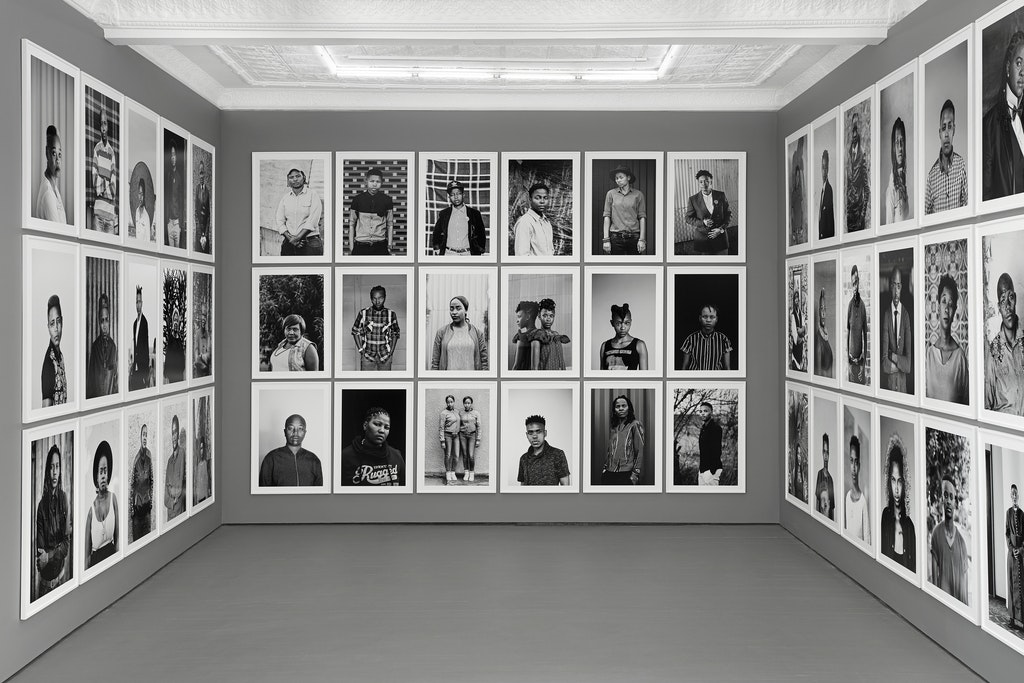An “evidence of accumulation,” 5Lauren Haynes, “Evidence of Accumulation,” in: Evidence of Accumulation, exh. cat. (Harlem, New York: Studio Museum, 2011), 1, 1. as curator Lauren Hayes coined Mpagi Sepuya’s aesthetic approach, to some degree also applies to the work of Zanele Muholi. Though in a quite different iconic tone, the artist and visual activist built a large photographic collective of formerly invisible lives: the queer lives of lesbians and trans people, “embodying a new vision of African sexuality,” 6Gabeba Baderoon, “Gender within Gender": Zanele Muholi's Images of Trans Being and Becoming,” in: Feminist Studies, vol. 37, no. 2, RACE AND TRANSGENDER STUDIES (Summer 2011), 390–416, 402. as Gabeba Baderoon put it. The 2006 series Faces and Phases is an ongoing project to depict a community that for a long time didn’t even know it existed. To date, more than five hundred, formally homogeneous black-and-white portraits – some barely bust length, some almost full figure – together form a visual archive of fights for survival, social exclusion, and a practice of concealment that is still the reality of queer life in many areas of the African continent where these images were taken. Nevertheless, Muholi presents proud and powerful individuals. Her models look straight into the camera to meet the beholder’s gaze; the larger-than-life prints, usually installed in a grid pattern right across the exhibition walls, outdo their audience in both number and size, as if to protect the individual within the shelter of the group.







